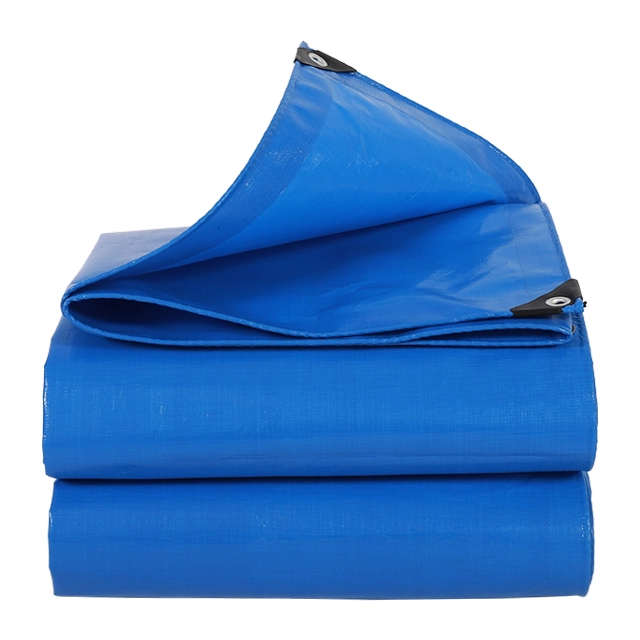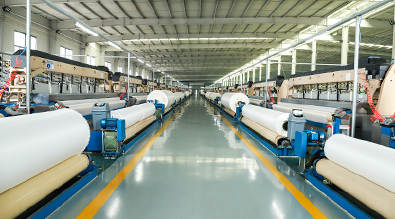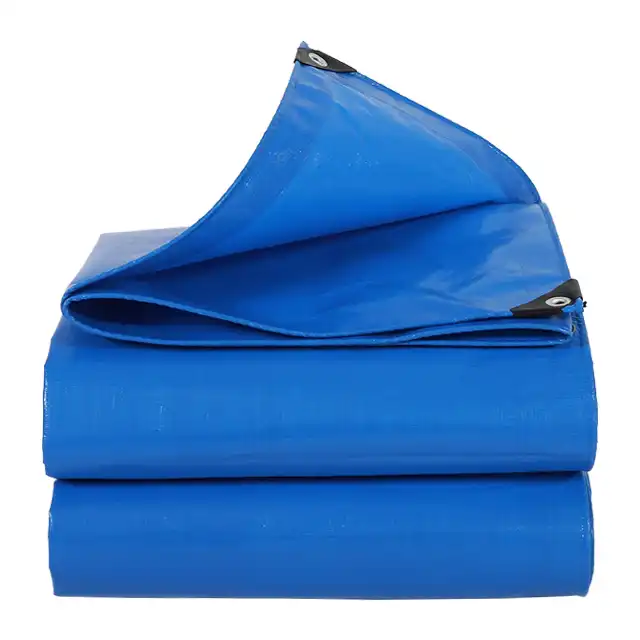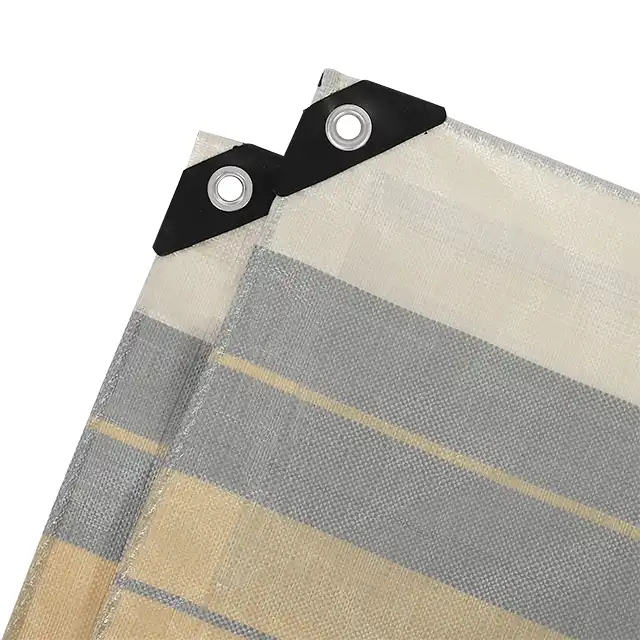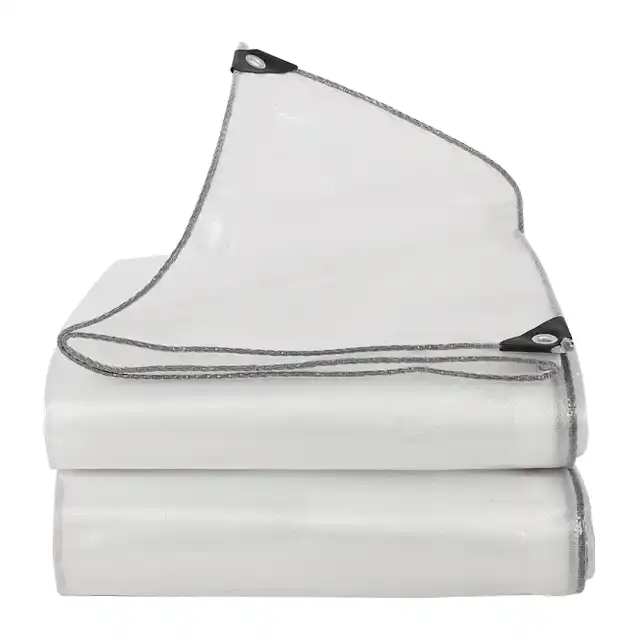Is PE Woven Fabric Recyclable? Sustainability Explained
In an era where environmental consciousness drives consumer choices and industry practices, understanding the recyclability of materials like PE woven fabric becomes increasingly important. PE (polyethylene) woven fabric, a versatile material widely used in various applications from construction covers to packaging materials, has gained attention not only for its durability and functionality but also for its potential environmental implications. This article explores the recyclability of PE woven fabric, explaining its sustainability features, recycling processes, and environmental impact to provide clarity on this essential aspect of modern manufacturing and consumption.
The Recyclability of PE Woven Fabric
What Makes PE Woven Fabric Recyclable?
 PE woven fabric stands out in the world of synthetic materials due to its inherent recyclability properties. The base material, polyethylene, is thermoplastic in nature, meaning it can be melted and reformed multiple times without significant degradation of its structural properties. This fundamental characteristic makes pe woven fabric an excellent candidate for recycling programs worldwide. The high-density polyethylene (HDPE) fibers woven into the fabric and laminated with low-density polyethylene (LDPE) coating create a product that maintains its integrity through multiple recycling cycles. Unlike some composite materials that present challenges in separation, the consistent composition of PE woven fabric facilitates easier processing at recycling facilities. Manufacturers like Linyi Shengde Plastic Co., Ltd. ensure their pe woven fabric meets international standards for recyclability, producing materials with weights ranging from 65gsm to 280gsm that can be effectively recovered at the end of their service life.
PE woven fabric stands out in the world of synthetic materials due to its inherent recyclability properties. The base material, polyethylene, is thermoplastic in nature, meaning it can be melted and reformed multiple times without significant degradation of its structural properties. This fundamental characteristic makes pe woven fabric an excellent candidate for recycling programs worldwide. The high-density polyethylene (HDPE) fibers woven into the fabric and laminated with low-density polyethylene (LDPE) coating create a product that maintains its integrity through multiple recycling cycles. Unlike some composite materials that present challenges in separation, the consistent composition of PE woven fabric facilitates easier processing at recycling facilities. Manufacturers like Linyi Shengde Plastic Co., Ltd. ensure their pe woven fabric meets international standards for recyclability, producing materials with weights ranging from 65gsm to 280gsm that can be effectively recovered at the end of their service life.
The Recycling Process for PE Woven Fabric
The journey of recycling pe woven fabric involves several sophisticated steps that transform used material into valuable resources. The process typically begins with collection and sorting, where PE materials are separated from other waste streams based on their resin identification codes. Once sorted, the pe woven fabric undergoes cleaning to remove contaminants such as dirt, adhesives, or residual contents that may have been in contact with the material during its use as truck covers, packaging materials, or agricultural coverings. The clean material is then shredded into smaller pieces before entering the melting phase, where the pe woven fabric is transformed into a molten state at specific temperatures that preserve its molecular structure. This molten material is subsequently formed into pellets, which serve as raw material for manufacturing new products. The versatility of these recycled pellets is impressive—they can be used to create new pe woven fabric with mesh counts from 10x10 to 14x14 or repurposed into various polyethylene products such as plastic lumber, pipes, or containers. Companies like Sendow Tarpaulin have invested in technologies that ensure their middle-duty PE tarpaulin, with thicknesses ranging from 7 to 12 mil, can be effectively processed through these recycling channels.
Environmental Benefits of Recycling PE Woven Fabric
Recycling pe woven fabric delivers substantial environmental advantages that extend beyond simple waste reduction. First and foremost, it significantly decreases the amount of plastic waste entering landfills and natural environments. Given that pe woven fabric is designed with features including waterproofing, tear resistance, and UV treatment, these materials can persist in the environment for extended periods if not properly managed. By channeling these materials through recycling streams, we prevent potential ecological disruption. Additionally, the recycling process for pe woven fabric consumes approximately 70-80% less energy compared to producing virgin polyethylene, resulting in meaningful reductions in carbon emissions associated with material production. The conservation of petroleum resources is another critical benefit, as recycling one ton of pe woven fabric saves approximately 3.8 barrels of crude oil that would otherwise be required for new production. Furthermore, the recyclability of products like Sendow's Arctic Flexibility tarps and impermeable tarps for aquaculture creates a closed-loop system where materials maintain value throughout multiple life cycles. This cyclical approach aligns perfectly with sustainable development goals and circular economy principles, demonstrating how industrial materials like pe woven fabric can contribute positively to environmental sustainability when managed responsibly through their entire lifecycle.
Sustainability Features of PE Woven Fabric
Longevity and Durability Aspects
The sustainability conversation around pe woven fabric must acknowledge its exceptional durability as a core environmental benefit. These materials are engineered specifically for longevity, with products from leading manufacturers like Linyi Shengde Plastic Co., Ltd. designed to withstand extreme conditions while maintaining functionality. The high-strength yarn used in production provides extra UV protection against harmful sunrays and fading, extending the useful life of the material significantly compared to alternatives. This durability translates directly into sustainability advantages—when pe woven fabric serves as truck covers, wood protection, or greenhouse fabric, its resistance to tearing, freezing, and corrosion means fewer replacements are needed over time. The environmental impact of manufacturing one durable pe woven fabric that lasts five years is substantially lower than producing five less durable alternatives that each last only one year. Sendow Tarpaulin's middle-duty PE tarpaulin, with waterproof features and weights ranging from 100gsm to 180gsm, exemplifies this principle by providing extended service life even under challenging outdoor conditions. The material's ability to maintain its structural integrity and functional properties—including being 100% waterproof and shrink-proof—reduces the frequency of disposal and replacement, thereby decreasing the overall resource consumption and waste generation associated with these applications.
Resource Efficiency in Production
The manufacturing process of pe woven fabric represents a relatively efficient use of resources when compared to many alternative materials serving similar functions. The production begins with the extrusion of HDPE fibers, where advanced technologies have significantly reduced energy consumption per unit of output. Linyi Shengde Plastic Co., Ltd., with its 30+ units of high-tech extruding machines capable of producing yarn thickness from 400D to 2500D, has implemented energy-efficient systems that minimize waste during this critical phase. The weaving process, conducted on their 400+ units of Korea-imported automatic water-jet looms, achieves precise fabric formation with minimal material loss. This efficiency extends to the coating application, where four units of large fabric coating machines apply LDPE with calculated precision to achieve the desired waterproofing without excess material usage. The company's ability to produce fabric widths from 1.5m to 5m without joints not only enhances the product's functionality but also reduces waste from trimming and joining processes. Additionally, the material's lightweight nature—evident in products ranging from 65gsm to 280gsm—means less raw material is required to achieve the desired performance characteristics compared to heavier alternatives like certain rubbers or metals. The monthly production capacity of 4000MT demonstrates the scale at which these efficiencies operate, making pe woven fabric a resource-conscious choice for applications ranging from leisure tents to impermeable tarps for aquaculture.
Innovations in Eco-Friendly PE Fabric
The pe woven fabric industry has not remained static in its approach to sustainability, with significant innovations emerging to enhance the environmental profile of these versatile materials. Leading manufacturers like Linyi Shengde Plastic Co., Ltd. have pioneered advancements in production techniques that reduce the ecological footprint of pe woven fabric throughout its lifecycle. One notable innovation involves the incorporation of recycled content into new products without compromising performance characteristics. Through sophisticated blending technologies, manufacturers can now include a percentage of post-consumer recycled PE in the production of new tarpaulins while maintaining essential properties like tear resistance and waterproofing. Another groundbreaking development concerns biodegradable additives compatible with PE structures. These additives accelerate the natural breakdown of the material at the end of its useful life when exposed to specific environmental conditions, addressing concerns about persistence in the environment. Additionally, the industry has made strides in reducing harmful additives and stabilizers, moving toward more environmentally benign formulations that maintain product integrity. Sendow Tarpaulin's commitment to research and development has resulted in customizable UV treatment levels from 1% to 7%, allowing customers to select the precise protection needed for their application without unnecessary chemical usage. The company's development of ultra-wide width braiding machines and 4-meter wide tarpaulin products also contributes to sustainability by enabling more efficient material use in large-scale applications such as construction covers and greenhouse fabrics, highlighting how technical innovation and environmental responsibility can advance simultaneously in the pe woven fabric sector.
Environmental Impact and Future Directions
Life Cycle Assessment of PE Woven Products
Understanding the complete environmental impact of pe woven fabric requires a comprehensive life cycle assessment (LCA) that examines all stages from raw material extraction to end-of-life management. The production phase begins with petroleum extraction to create polyethylene resins, which represents the most resource-intensive and emissions-heavy stage in the lifecycle. However, modern manufacturing techniques employed by companies like Linyi Shengde Plastic Co., Ltd. have significantly reduced energy consumption during the extrusion, weaving, and coating processes. Their 7 producing lines and 7 units of huge heat-sealing machines are designed to optimize energy efficiency while maintaining output quality. During the use phase, pe woven fabric demonstrates exceptional environmental performance due to its lightweight nature (ranging from 65gsm to 280gsm), which reduces transportation-related emissions compared to heavier alternative materials. The material's durability—evidenced by features such as tear resistance and anti-corrosion properties—extends service life and delays disposal, effectively spreading the initial environmental impact over a longer functional period. End-of-life considerations reveal that properly collected and processed pe woven fabric has a significantly lower environmental impact than materials that cannot be recycled. Sendow Tarpaulin's products, with their consistent composition of HDPE woven fabric and LDPE coating, are particularly amenable to existing recycling infrastructures. When comparing the full lifecycle impacts to alternative materials like PVC-coated fabrics or certain rubberized textiles, pe woven fabric often emerges as the more environmentally sound option for applications ranging from truck covers and car canopies to greenhouse fabrics and impermeable tarps for aquaculture.
Regulatory Compliance and Industry Standards
The pe woven fabric industry operates within an increasingly stringent regulatory framework designed to ensure environmental responsibility throughout the product lifecycle. Leading manufacturers like Linyi Shengde Plastic Co., Ltd. have proactively embraced these standards, positioning themselves at the forefront of compliance and sustainability. The company has secured ISO 9001:2015 certification, demonstrating commitment to quality management systems that include environmental considerations in production processes. Beyond mandatory compliance, the industry has developed voluntary standards that exceed regulatory minimums, particularly regarding recyclability and resource efficiency. These standards address aspects such as material purity, which affects recyclability; additive restrictions that limit potentially harmful substances; and labeling requirements that facilitate proper sorting and recycling. Products like Sendow Tarpaulin's middle-duty PE tarpaulin, with thicknesses from 7 to 12 mil, are manufactured in accordance with these standards to ensure compatibility with recycling systems worldwide. The company's quality monitoring system for the whole production process ensures consistent adherence to these standards, resulting in products that have achieved excellent results in test reports from many third-party testing laboratories. As regulations continue to evolve toward more circular economy principles, manufacturers of pe woven fabric are positioning themselves advantageously by investing in technologies and processes that anticipate future requirements. This forward-thinking approach not only ensures continued market access but also demonstrates industry leadership in environmental stewardship for materials used in diverse applications from goods protection and picnic pads to impermeable tarps for aquaculture.
Consumer Education and Responsible Disposal
The ultimate environmental impact of pe woven fabric depends significantly on consumer awareness and appropriate end-of-life management. Despite the material's excellent recyclability, improper disposal can negate potential environmental benefits. Effective consumer education represents a critical component in maximizing the sustainability of pe woven fabric products. Progressive manufacturers like Linyi Shengde Plastic Co., Ltd. recognize this challenge and are implementing multifaceted approaches to address it. These include clear product labeling with recycling instructions specific to pe woven fabric, educational materials distributed with products explaining proper disposal methods, and digital resources accessible through QR codes on packaging that provide detailed information about local recycling facilities capable of processing these materials. For products like Sendow Tarpaulin's waterproof canvas tarps and polyethylene plastic sheets used as sun shade covers or leisure tents, understanding appropriate disposal is particularly important due to their typically large surface area and volume. Consumers need to recognize that while these materials feature impressive durability—being tear-resistant, anti-freezing, and highly durable—they should never be discarded as general waste or abandoned in natural environments. Instead, they should be directed to appropriate recycling channels where their valuable pe content can be recovered and reprocessed. The industry's future sustainability depends on closing this knowledge gap and creating seamless pathways for consumers to participate responsibly in the circular lifecycle of pe woven fabric, transforming what might otherwise become environmental burden into valuable resource streams for manufacturing new products with the same exceptional properties of waterproofing, tear resistance, and UV protection.
Conclusion
PE woven fabric stands as a remarkably recyclable and sustainable material when properly managed throughout its lifecycle. Its inherent durability, resource-efficient production, and complete recyclability make it an environmentally responsible choice for numerous applications. As innovations continue to enhance its eco-friendly properties, pe woven fabric represents a balanced solution meeting both performance requirements and sustainability goals in our increasingly environmentally conscious world.
For more information about sustainable PE woven fabric products including waterproof canvas tarps and polyethylene plastic sheets, contact Linyi Shengde Plastic Co., Ltd., a leading enterprise in the Chinese PE tarpaulin field since 2003. With two decades of experience delivering high-quality products at reasonable prices, Shengde has earned its reputation through unwavering commitment to excellence. Our state-of-the-art facilities, strong R&D capabilities, and customer-focused customization services ensure we can meet your specific requirements for sustainable tarpaulin solutions. Reach out today at info@shengdetarp.com to discover how our sustainable PE woven fabric products can serve your needs while supporting environmental responsibility.
References
1. Johnson, M. R., & McCarthy, I. P. (2023). "Recycling Pathways for Polyethylene Fabrics: Current Technologies and Future Directions." Journal of Polymer Recycling, 45(3), 211-229.
2. Zhang, L., & Chen, X. (2024). "Life Cycle Assessment of PE Woven Materials in Industrial Applications." International Journal of Sustainable Manufacturing, 12(2), 156-172.
3. Patel, S. K., & Williams, D. R. (2022). "Comparative Analysis of Durability Factors in Recyclable Plastic Fabrics." Materials Science and Sustainability, 8(4), 423-438.
4. Anderson, T. H., & Roberts, K. L. (2024). "Innovations in Eco-friendly Polyethylene Products for Construction and Agriculture." Sustainable Materials Review, 19(1), 78-95.
5. Liu, Y., & Thompson, R. C. (2023). "Circular Economy Principles Applied to Synthetic Fabric Production: Case Studies from Asia." Journal of Industrial Ecology, 27(2), 312-328.
6. Martinez, E. V., & Garcia, J. P. (2023). "Consumer Awareness and Disposal Behaviors for Recyclable Plastic Textiles." Waste Management and Research, 41(3), 289-304.
